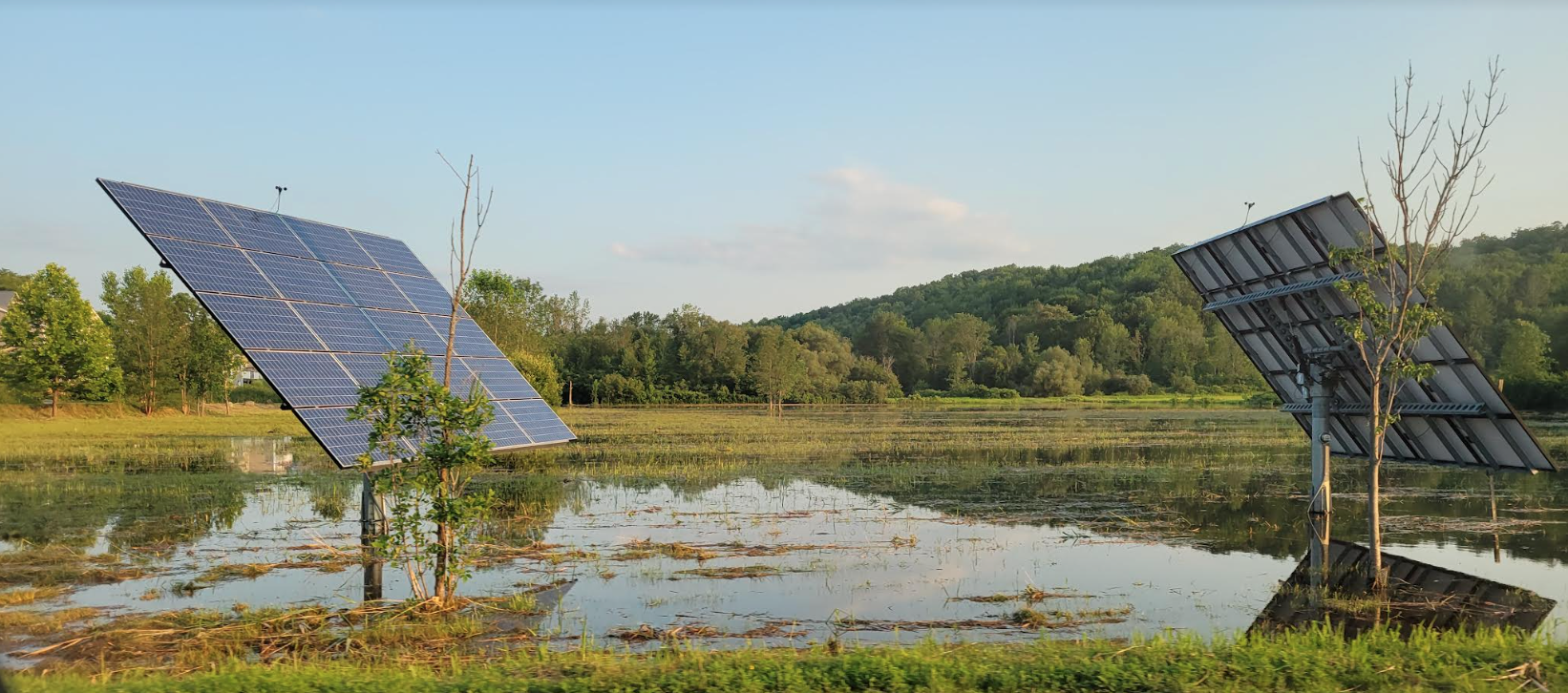One year ago this week, as our staff convened for a strategy session at our office in Montpelier, rain lashed the windows and phone alerts kept us abreast of weather conditions and road closures. This storm felt different than a typical summer rain, and the rainfall predictions had ballooned overnight to proportions not seen since Hurricane Irene 12 years before. The Winooski River was already considerably higher than usual, and water was bubbling up through the storm drains on Bailey Avenue at 9am. We ultimately called the meeting to an early close, and headed to our various corners of the state, in what proved to be a timely decision to get home before the rising floodwaters blocked the roads.
Like many Vermonters, we are reflecting on last summer’s floods with mixed emotions — gratitude to live in a state where neighbors help each other out and aren’t afraid to get our hands dirty; pride that we’ve been able to rebound as much as we have in one year; fear for the inevitable coming climate disasters; and resolve that the recovery isn’t finished and that there’s much yet to be done to prepare for future storms
After the initial recovery efforts, we got down to a different kind of work: Formulating the necessary policies to ensure we are much better prepared for the next big storm.
This work culminated less than a year later in the Flood Safety Act, an instrumental piece of legislation that tackles flood prevention on numerous fronts:
- Addressing development in high-hazard river corridors by implementing statewide standards to keep future development out of harm’s way and allow space for our rivers to store and slow floodwaters, which help reduce flood impacts and costs for Vermonters;
- Increasing floodwater storage in wetlands through improved mapping and reporting and establishing a 2:1 wetland net-gain policy to reverse historic wetland loss through protection and restoration; and
- Improving dam safety by consolidating oversight and strengthening maintenance requirements for dam owners, while investing in the strategic removal of dams that exacerbate flooding and pose a risk to public safety.
All of these efforts will help to ensure that people and infrastructure are out of harm’s way in future deluges, and that we have the capacity in our rivers and wetlands to absorb much of the excess water.
Recognizing that climate change is driving an increase in the frequency and intensity of major storms, we also worked to pass critical climate-focused legislation this year, including updates to the Renewable Energy Standard, to put Vermont on a path toward 100% renewable electricity before 2035, and the Climate Superfund Act (also known as “Make Big Oil Pay”) to recover costs from the major oil companies proportional to their share of the damages caused by climate change. Both of these bills will go a long way to meeting our climate commitments and safeguarding the future health and resilience of Vermont.
As proud as we are of these accomplishments, there is still much work to be done.
We need to focus on municipal resilience in our cities, towns, and villages, so that local communities have the resources needed for the impacts of climate change — whether flooding, heatwaves, or otherwise. We need to speed up the transition away from fossil fuels in our heating and transportation sectors — particularly challenging for a rural state. And we need to stay nimble, so we can continue adapting to whatever the changing climate throws at us.
In many ways last summer feels much more recent than a year ago. We are still recovering from the floods, and in some areas still will be for some time. We don’t know what’s around the corner, but just as we saw last summer, we know that we’ll be there for each other in future challenges. And we’re continuing the ongoing work to make sure our neighbors, communities and natural resources are protected, healthy, and resilient, for whatever comes next.




